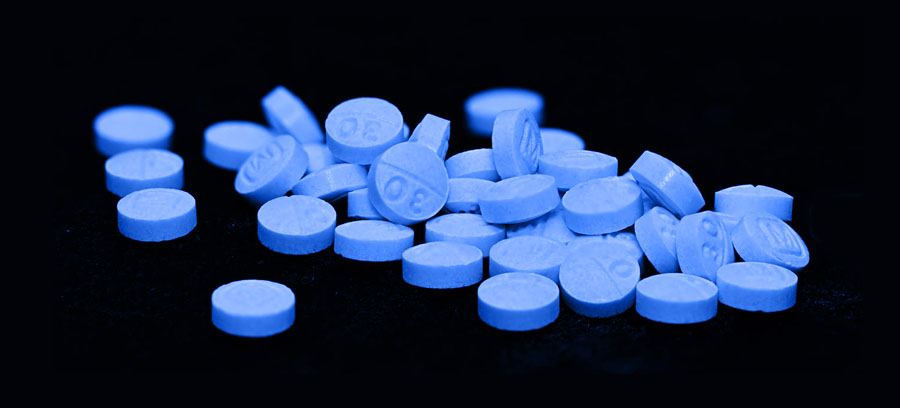Fentanyl is a synthetic opioid that is 50 to 100 times more potent than morphine. It is used to treat patients with severe pain after surgery, especially those who are physically tolerant to other opioids [1]. However, it is often abused illegally and mixed with other drugs, which can result in dangerous respiratory depression.
The non-medical use of fentanyl has been reported to cause a large number of deaths [2]. Its illegal use is a significant contributor to the opioid abuse epidemic in the US, as it is cheap and highly potent. The Centers for Disease Control and Prevention (CDC) reported that the death rates from fentanyl increased by 72.2 % from 2014 to 2015. Overdoses of the drug associated with fentanyl are often unintentional, resulting from the drug being laced with street-sold heroin or cocaine [3].
Detection of Fentanyl
Fentanyl is a synthetic narcotic analgesic, available as a citrate salt (50 μg/mL) injectable solution as well as a transdermal patch (2.5–10 mg fentanyl) for the management of severe chronic pain [4]. Although, fentanyl has similar properties with morphine, it is structurally different from morphine and cannot be detected by screening tests for morphine and related opiates. Fentanyl is not a natural opiate, but a synthetic opioid.
Due to its potency, the drug is detected in sub nanogram range concentrations in biological fluids [5]. As the drug becomes more ionized, the plasma protein binding capacity of fentanyl decreases. It is primarily metabolized through the human cytochrome P450 3A4 isoenzyme system by the oxidative N-dealkylation to form Norfentanyl and other inactive metabolites. Within 72 hours of intravenous fentanyl administration, about 75% of the drug is excreted in urine, mostly in the form of metabolites with <10% representing the actual drug [6].
How Does the Fentanyl Immunoassay Kit Work?
The Fentanyl Urine SEFRIA™ Drug Screening Kit is used to detect fentanyl and its major metabolites in human urine samples with a cut off of 1 ng/mL for qualitative testing. It is the first-ever FDA 510(k) cleared fentanyl enzyme immunoassay, which is comparable to liquid chromatography-mass spectrometry (LC-MS) analysis in terms of sensitivity (ability to detect positive results) and specificity (ability to detect negative results).
How to Use the Fentanyl Immunoassay Kit
The fentanyl enzyme immunoassay is intended to use for the qualitative analysis of fentanyl on popular analyzers, such as the AU Series Analyzer or an ImmTox ™ 270 Benchtop Analyzer.
The Fentanyl Urine SEFRIA™ Drug Screening Kit contains two ready-to-use reagents: Antibody/Enzyme Donor and Substrate/Enzyme Acceptor. The test principle of fentanyl SEFRIA enzyme immunoassay is based on artificial fragments of β-galactosidase (E. coli enzyme). The Enzyme Acceptor (EA) is inactive, but can combine with Enzyme Donor (ED) to form active β-galactosidase and this process is called as complementation. The formation of active enzyme can be measured by the hydrolysis of a chromogenic substrate such as chlorophenolred β-D-galactopyranoside (CPRG). The peptides of the ED which are attached to a derivative of fentanyl, do not interfere with active β-galactosidase formation. However, upon the binding of fentanyl antibodies to the ED-fentanyl conjugate, blockage of complementation commences, and this prevents the formation of active β-galactosidase.
The fentanyl enzyme immunoassay is based on the competition of fentanyl with ED-fentanyl conjugate for the fixed amount of antibody binding sites in a urine sample. If the free drug is absent in the urine sample, binding of the antibody with the ED-fentanyl conjugate occurs, which results in the inhibition of enzyme formation. As concentration of fentanyl increases in the sample, ED-fentanyl becomes available for complementation. This will create a dose response relationship between fentanyl concentration in the urine and enzyme formation. The activity of β- galactosidase is measured spectrophotometrically at the wavelength of 570 nm by the conversion of CPRG (orange) to chlorophenol red (red) and galactose. All calibrators of the fentanyl enzyme immunoassay are sold as ready to use liquid in separate bottles. A drug-free synthetic urine matrix is used as a negative calibrator with sodium azide as a preservative. Each calibrator (1, 2, and 4 ng/mL) contains a known concentration of fentanyl, spiked into the negative calibrator matrix.
Reasons to Add Fentanyl to Your Menu
By incorporating fentanyl into the repertoire of substances of your test menu, this enzymatic assay presents a pivotal opportunity to improve the scope and efficacy of opioid screening protocols. The enhancing of your test menu via the fentanyl screening kit not only augments the analytical capabilities of healthcare practitioners but also serves as a proactive measure in the preservation of human lives. Given the prevalent and severe nature of the opioid epidemic, the inclusion of fentanyl detection in routine screening protocols represents a strategic and impactful approach toward addressing this public health crisis.
In essence, the advent of this FDA-cleared, CLIA Moderate Complexity fentanyl enzyme immunoassay stands as a significant milestone in the concerted effort to combat the opioid epidemic, offering a technically advanced and formally validated solution that holds the promise of transformative impact across diverse healthcare settings. The imperative to add fentanyl to your test menu and save lives underscores the profound clinical implications and societal benefits associated with the adoption of this innovative diagnostic tool.
References
1] NIDA. “Fentanyl DrugFacts.” National Institute on Drug Abuse, 1 Jun. 2021, https://nida.nih.gov/publications/drugfacts/fentanyl Accessed 8 Jan. 2024.
2] Boddiger, D. (2006, August 12). Fentanyl-laced street drugs “kill hundreds”. In EBSCOhost. Accessed 8 Jan. 2024.
3] Centers for Disease Control and Prevention (CDC). Fentanyl data. https://www.cdc.gov/stopoverdose/fentanyl/ ; Accessed 8 Jan. 2024.
4] R.C. Baselt and R.H. Cravey. Disposition of Toxic Drugs and Chemicals in Man. 8th edition. 450-453.
5] L.S. Goodman and A. Gilman. The Pharmaceutical Basis of Therapeutics. 4th edition. 258.
6] National Center for Biotechnology Information. “PubChem Compound Summary for CID 3345, Fentanyl” PubChem, https://pubchem.ncbi.nlm.nih.gov/compound/Fentanyl. Accessed 8 Jan. 2024.


